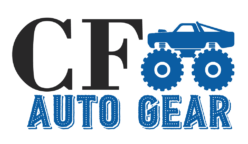Every automobile owner knows that heart-dropping moment when a minor mishap or an unfortunate encounter accompanying a rogue buying cart leaves a noticeable dent or scratch on their beloved car. While these beautifying blemishes may appear daunting, repairing automobile body panels is not as threatening as it might first perform.
In this blog, we’ll survey some realistic steps for restoring your car’s exterior to its erstwhile glory. Whether you’re a seasoned DIY lover or just looking to save a bit on repair costs, these directions will help you tackle those pesky flaws with confidence.
Assess the Damage
Before diving into the meat of automobile repair, it’s essential to determine the damage. Look closely at the afflicted panel to decide whether it’s a plain dent, a scratch, or something more harsh like a crease. Minor dents and scratches can often be governed at home, but if you spot signs of more serious damage, in the way as rust or a deep crease, it might be best to ask a professional for Auto Repair in Augusta, GA.
Gather Your Tools
Once you have a clear understanding of the damage, it’s time to draw your tools. For most DIY repairs, you’ll need any essentials:
- A hairdryer or heat gun
- A suction cup dent puller
- Fine-grit sandpaper (like, 400 to 800 grit)
- Body filler or putty
- Primer and touch-up paint
- A gentle cloth and polishing compound
These finishes are generally approachable, and having them on hand will make the process smoother and more adept.
Removing Dents
For shallow dents, start by utilizing a hairdryer or heat gun to warm the broken area. Heating the alloy makes it more adaptable and easier to maneuver. Once heated, use an extract drink dent puller to gently attract the dent out.
Fixing Scratches
Scratches, particularly those that haven’t penetrated the paint, can frequently be buffed out with some elbow grease. Start by cleansing the area accompanying soap and water, before gently soiling the scratch with fine-courage sandpaper as far as smooth.
Using Body Filler for Larger Repairs
Start by sanding the field to remove some rust or loose paint. Then, join the corpse filler to the instructions and request it to the damaged field with a bendable knife. Once dry, sand the stuffing until smooth, guaranteeing it’s level with the rest of the committee. Finish with primer and paint for a smooth repair.
Polishing and Finishing Touches
Apply a polishing compound with a clean, simple cloth, and buff the region in circular motions.
Conclusion
By following these practical steps, you can fix your vehicle’s exterior, claim its advantage, and even learn a new ability along the way. Remember, while not essential, learning this process can certainly be a valuable addition to your limousine upkeep repertoire.

